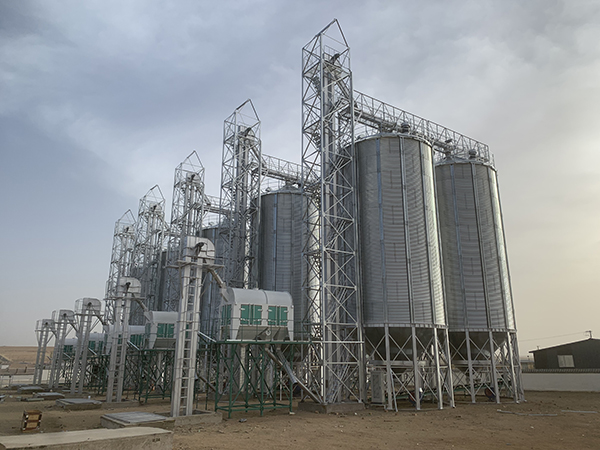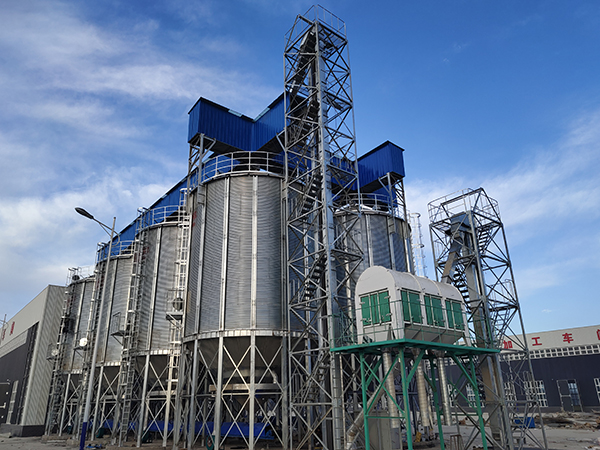Steel Silo Wholesale: Market Strategy and Procurement Guide
In the market catering to bulk storage needs, steel silo wholesale has become a significant supply chain link due to its economic and efficient nature. Wholesalers serve a broad range of industrial and agricultural clients by providing customized steel silo solutions.
- Steel Silo Manufacturers: The Backbone of Industrial Storage
- Steel Silo Manufacturer: Market Positioning and Production Advantages
- Steel Silo Wholesale: Market Strategy and Procurement Guide
- Steel Silo Sales: Market Dynamics and Strategy Analysis
- Steel Silo Companies: Market Position and Service Advantages
- Steel Silo Factorie: Production Prowess and Market Position
- Steel Silo Companie: Industry Roles and Service Value
- Steel Silo Supplier: A Guide to Selection and Collaboration
- Steel Silo Prices Analysis and Market Trends
- High-Quality Steel Silo: Enhancing Grain Storage Efficiency
Wholesale Overview
In the market catering to bulk storage needs, steel silo wholesale has become a significant supply chain link due to its economic and efficient nature. Wholesalers serve a broad range of industrial and agricultural clients by providing customized steel silo solutions.
Core Advantages of Steel Silo Wholesale
The core advantages of steel silo wholesale include:
Pricing Benefits
Lower unit costs through bulk purchases, offering clients more favorable prices.
Diversity of Options
Offering a variety of sizes and specifications of steel silos to meet different clients’ storage needs.
Customization Services
Providing customized steel silo design and manufacturing services based on special client requirements.
Logistics Support
Offering professional logistics services to ensure the safe and timely delivery of steel silos to the client’s specified location.

Criteria for Selecting Wholesalers
When choosing a reliable steel silo wholesale merchant, consider the following criteria:
Reputation and Experience
Opt for a wholesaler with a good reputation and extensive experience.
Product Quality
Ensure the wholesaler’s steel silos meet industry standards for quality.
Price Competitiveness
Compare quotes from different wholesalers to find a supplier with good value for money.
Service and Support
Understand the after-sales service and technical support provided by the wholesaler.

Procurement Process for Steel Silo Wholesale
The procurement process for steel silo wholesale typically includes:
Needs Analysis
Communicate with the wholesaler to clarify storage needs and budget.
Scheme Selection
Choose the appropriate steel silo model and specifications based on the needs.
Contract Signing
Sign a purchase contract with the wholesaler, specifying delivery times and payment terms.
Logistics Coordination
Coordinate logistics arrangements to ensure timely delivery of the steel silos.
Installation and Acceptance
Conduct installation and acceptance upon receipt of the steel silos to ensure they meet expectations.

Market Trends and Wholesalers’ Adaptability
Changes in market trends present new challenges and requirements for steel silo wholesalers:
Technological Advancements
Wholesalers need to keep track of the latest steel silo technologies to offer the most advanced products to clients.
Environmental Requirements
The market demand for environmentally friendly steel silos is growing, and wholesalers need to adapt to this trend.
Digital Management
Utilizing digital tools to improve inventory management and logistics efficiency.
Conclusion
Steel silo wholesaler provides a cost-effective option for clients needing large quantities of storage solutions. By partnering with reputable wholesalers, clients can access high-quality steel silo products and professional services.
Future Outlook
Looking ahead, the steel silo wholesale industry will continue to evolve, offering more personalized and eco-friendly storage solutions. Wholesalers will need to innovate continuously and enhance service quality to adapt to rapid market changes and the diverse needs of clients. At the same time, digital transformation will be key to improving operational efficiency and customer experience.








